Click on images to enlarge
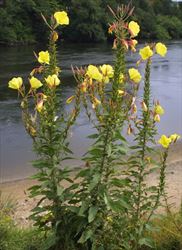
habit (Photo: Trevor James)
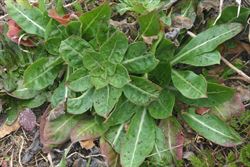
rosettes of lower leaves (Photo: Trevor James)
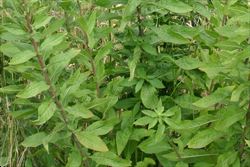
stem leaves (Photo: Trevor James)
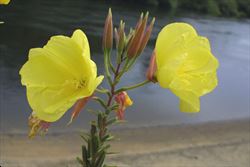
flower cluster with red sepals on flower buds (Photo: Trevor James)
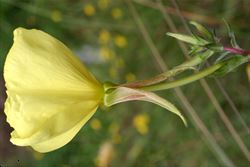
flower from side-on (Photo: Trevor James)
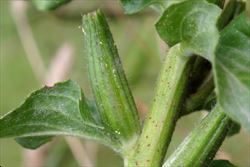
close-up of stem, with red-based hairs, and immature fruit (Photo: Trevor James)
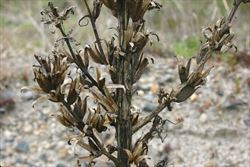
old fruit (Photo: Trevor James)
Scientific Name
Oenothera glazioviana Micheli
Synonyms
Oenothera erythrosepala BorbásOenothera lamarckiana Sér. (misapplied)
Family
Onagraceae
Common Names
evening primrose, large flowered evening primrose, large-flower evening primrose, large-flowered evening primrose, reddish evening primrose, reddish evening-primrose, red-sepal evening primrose, red-sepal evening-primrose, redsepal evening-primrose, redsepal eveningprimrose, tall evening primrose
Origin
This species is thought to have come from Europe, and probably originates from a garden hybrid between Oenothera grandiflora and Oenothera elata.
Naturalised Distribution
Widely naturalised in southern and eastern Australia (i.e. in south-eastern Queensland, eastern New South Wales, the ACT, Victoria, Tasmania, south-eastern South Australia and in the coastal districts of south-western Western Australia).
Red-sepal evening primrose (Oenothera glazioviana) has also become naturalised in many other parts of the world, including on all other continents except Antarctica.
Notes
Red-sepal evening primrose (Oenothera glazioviana) is regarded as an environmental weed in Victoria and Western Australia. It has escaped cultivation as a garden ornamental and become naturalised along roadsides and railway lines, in disturbed sites and waste areas, and also in natural habitats.
In south-western Western Australia, red-sepal evening primrose (Oenothera glazioviana) grows near swamps and along roadsides between Perth, Albany and Manjimup. In New South Wales it is widely naturalised along roadsides and railways, and is also a weed of beaches in the Sydney region. This species has also been recorded in conservation areas in north-western Victoria (i.e. Barkindji Biosphere Reserve) and is seen as a potential environmental weed in many parts of this state (e.g. in Frankston City and the Angahook-Otways region).

